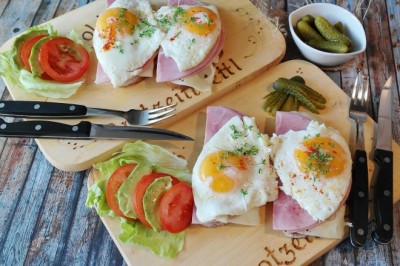Low light DSLR cameras and night photography settings
Images of night scenes never fail to impress. Photos taken after dark have a distinct mood , something which is often absent in flat, daylight photos. Skilfully-taken low-light photos can look simply incredible and if you’re looking for ways to make money from photography, a good option is specialising in canvass prints of dimly-lit night scenes. They always get a great response.
Here we will focus on two things:
- Night photography settings and techniques
- Digital SLR cameras to consider if you want to try your hand at night photography
1. Camera exposure settings: A brief introduction
Given the amount of available light, there is a "right" exposure, meaning that the correct amount of light is allowed to fall on the digital camera sensor to capture the scene - i.e. not too much light, which will leave the picutre over-exposed, or alternatively, under-exposing the low-lights to leave the picture too dark.
The light allowed onto the sensor is affected by three different variables:
a. Aperture or f-stop: Here is an inverse relationship: Low f-stop values mean more light is being let in
b. The shutter speed: A slow shutter speed means the sensor is exposed to light for a longer time, letting in more light
c. ISO: At higher ISO settings the sensor is more sensitive to light
Multiple combos of these 3 variables will give you the right exposure for a particular scene. Which combinations work? This is what your cameras light meter is for - it will tell you how to combine them. For instance, when you pre-select aperture and ISO values, the shutter speed will be determined by the camera based on the light reading it obtains from the scene. Or when you select ISO and shutter speed values, the camera will set the correct aperture.
If you shoot on "auto" the camera will automatically select and optimal combination of the three elements to ensure you get a sharp enough picture. Great night photos require a bit more skill and creative input - time to ditch the "auto" training wheels!
2. Low-light photos: Different settings for different situations
Note: The one night shooting option omitted here is using a flash - but this is a completely different kind of concept for a "night scene" and I’ll deal with flash photography on its own in a later post.
a. A quality, fast lens with a wide maximum aperture
This is a good option for street photographers who want to capture low-light (but perhaps not night-time) street photos.
The idea is to use a "fast" lens with high maximum aperture (low f-stop) such as f/2.8 or f/1.4. This will give you a nice shallow depth of field which adds dimension to your photos, whilst allowing you to shoot at decent shutter speeds. Slower shutter speeds increase the risk of blur.
This technique is especially important if your camera doesnt deliver good quality at high ISO settings, so youre forced to shoot at low ISO, whatever the scene. But even if you have a top-notch high-ISO camera, you may want to shoot at a low ISO with extreme aperture to get a shallow depth of focus to add more dimension to your images.
b. Long exposures with a tripod
Consider this option if you want to take wider images of city scenes at night, where your subject isnt moving, so you have time to set up the image.
Make sure the whole scene is sharp by choosing a mid-range f-stop, say f/8, fix the camera to your tripod and and leave the shutter speed selection to the camera. Light depending, this can be anything from just under 1 second to several seconds or, even several minutes if your camera can shoot at very low ISO.
Top tip: The best time to take photos of cityscapes is just after sunset, when there is still a little bit of ambient blue in the sky. Set your exposure by pointing the camera at the sky. Once youve got the reading, fix the setting and then set up the shot - youll get a really good exposure this way.
c. Increase the ISO
This is especially useful (and sometimes unavoidable) if you’re taking photos at an indoors or night time event where flash photography isn’t allowed, or where you want to capture the atmosphere in the room which will otherwise be destroyed by the use of a bright, ugly flash.
You can force the camera to be more light-sensitive by increasing the ISO. This will enable you to shoot hand-held shots even in relatively dark conditions. Why? Because the sensor is more sensitive, it is able to "amplify" the available light in the scene so you can get away with shorter exposures (faster shutter speeds) which means your images are less likely to be blurred.
Remember: Theres no such thing as a free lunch. Increasing the ISO means that you are more likely to get a noisy / grainy photo.
3. Cameras for low-light shooting
Certain cameras give you more low-light flexibility because they perform well at high ISO settings - leaving you full creative control over which of the three above options you choose to make your photos.
Because DLSR cameras tend to have bigger sensors, they generally take better high-ISO photos than compact cameras with relatively small sensors (its a bit technical, but its based on the laws of physics and electronics) . The newest DSLRs feature full-frame sensors delivering amazing high-ISO performance.
Here is a list of good low light DSLR cameras
Nikon D3000
Canon EOS 500D
Nikon D5000
Canon EOS 550D
Nikon D300s
Canon EOS 7D
Canon EOS 5D MKII
Nikon D700
Nikon D3S
Canon EOS 1D MKIV
Looking to learn more about digital photography? Check out top10digitalcamerashq.com where you can find out how to recover deleted pictures from a memory card, read reviews of the top 10 digital cameras in the market today, and much more.


















